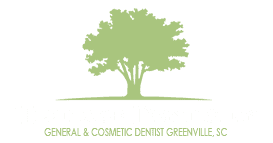Mouthwash
Mouthwash has been used for centuries, across cultures, to treat a variety of ailments. Mouthwash is liquid that is held in the mouth or swished around inside the mouth, and perhaps gargled, usually used to reduce the amount of bacteria in the mouth or to treat inflammation or infection. Some mouthwashes are intended to counteract xerostomia, or dry mouth, which can foster excess acid production and lead to tooth decay. Fluoridated mouthwash can help increase available fluoride levels in the mouth and may help lower the likelihood of cavities, while other mouthwashes serve strictly cosmetic purposes, like temporarily reducing bad breath.
The earliest mouthwashes were used in ancient cultures to treat gum ailments. These rinses were made of naturally occurring materials, like vinegar, and often contained botanical elements, like herbal extracts and vegetable oils. Historically, people have also used salt water rinses and gargling methods to relieve the discomfort of sore throats or ulcers in the mouth. In the 1960s, a Danish dental professor named Harald Loe learned that chlorhexidine could help dental plaque from adhering to the teeth, which heralded a new commercial interest in mouthwash and led to a considerable increase in the number of commercial mouthwashes available.
Dentists recommend that patients who use mouthwash do not do so immediately after brushing the teeth, to allow fluoride residue from toothpaste to remain on the surfaces of the teeth for as long as possible. For this reason, dentists also don’t recommend rinsing the mouth with water directly after brushing. While antiseptic mouthwashes may help kill the plaque that causes cavities, mouthwash use should never be a substitute for regular brushing and flossing. While the American Dental Association (ADA) approves the use of many mouthwashes, they historically assert that mouthwash is not a necessary part of an oral hygiene routine, and that brushing and flossing are sufficient to prevent and control tooth decay and gingivitis. Mouthwash that contains alcohol may dry out the mouth, and some mouthwash may cause side effects like staining of the teeth or ulceration and redness of the soft tissues in the mouth.
Dentists may prescribe analgesic or antibacterial mouthwash for use before and after oral surgery procedures, to relieve pain and to accelerate healing, though many studies suggest that saline rinse is equally effective in these regards. Innovations in research have led to the development of mouthwashes that directly attack cavity-causing bacteria, preventing these bacteria from growing in the first place. Most mouthwashes are made with a base of alcohol that serves as a carrying agent, which may increase breath alcohol levels and may also cause dry mouth that worsens short-term halitosis. Some research suggests that alcohol-based mouthwash may be carcinogenic, though there is insufficient research to form a consensus about this. Still, however, many newly developed mouthwashes are made without alcohol. Other common ingredients in commercial mouthwash include buffering agents, antiseptics, astringents, essential oils, fluoride, hydrogen peroxide, flavoring agents, and xylitol. Xylitol has been found to be a suitable substitute for alcohol in many mouthwashes, and it has the added benefit of inhibiting bacterial growth. Medicated and prescription mouthwashes contain a host of other active ingredients, often added to the same or similar base elements as commercial mouthwashes.
